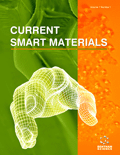Abstract
Background: Acoustic power transfer is a method for wireless energy transfer to implanted medical devices that permits a greater range of separation between transmitter and receiver than is possible with inductive power transfer. In some cases, short-distance ultrasonic power transfer may be employed; consequently, their operation may be complicated by the near-field aspects of piezoelectric acoustic energy transfer.
Methods: A piezoelectric energy transfer system consisting of two lead zirconate titanate (PZT) transducers was analyzed in this work using a combination of experimental measurements and computer simulations.
Results: Simulations using the COMSOL Software package showed good agreement with measured output voltage as a function of the distance between and alignment of the transmitter and receiver with water as a medium. We also simulated how operating frequency affects power transfer efficiency at various distances between the transmitter and receiver and found reasonable agreement with experiments. We report model predictions for power transfer efficiency as a function of the thickness and diameter of the transmitter and receiver.
Conclusion: The results show that with proper choice of parameters, piezoelectric systems can provide high power transfer efficiency in the near-field region.
Keywords: Power transfer efficiency, piezoelectric, implanted medical devices, ultrasonic, optimize, lead zirconate titanate (PZT).
Graphical Abstract
 6
6




